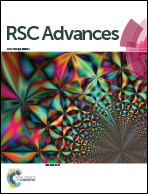An approach to 6-trifluoromethyl-phenanthridines through visible-light-mediated intramolecular radical cyclization of trifluoroacetimidoyl chlorides†
Abstract
A mild and efficient visible light-mediated intramolecular radical cyclization of trifluoroacetimidoyl chlorides is developed for the synthesis of 6-(trifluoromethyl)phenanthridine derivatives. The reaction involves the generation of radical intermediates from C(sp2)–Cl bonds and a homolytic radical aromatic substitution (HAS) process.


 Please wait while we load your content...
Please wait while we load your content...